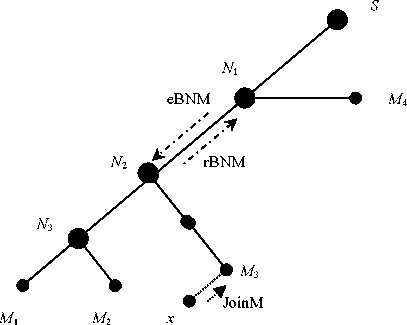Figure 4.12 shows the case when a new receiver (x) is the first receiver wants to join the
multicast tree through M3. In this case tree maintenance should occur, as mentioned
previously in this chapter.

|
Nodes |
MFTs |
|
S (Source) |
MTI | IP_Nι unchanged |
|
Nι |
MTI | IP_N3 &IP_M4 MTI | IP_N2 &IP_M4 |
|
N2 |
__MTI | IP_N3 & IP_M33 |
|
N3 |
MTI | IP_M1 & IP_M2 unchanged |
Join message
eBNM or rBNM
Figure 4.12 Tree maintenance in SReM
N1 is the first BNR receiving the join message; N1 will realize that this joining message is
coming from new branch that is not found in its MFT table. Upon receiving the join message,
N1 initiates an eBNM message with fields values shown in Figure 4.13 and forwards the
message downstream towards the x’LMR.
|
group address |
source |
previous branching node |
Destination(s) |
|
(S,G) |
IP_address (N1) |
IP_address(S) |
IP_address (M3,N3) |
Figure 4.13 Example of eBNM in SReM
Upon receiving this message, the IMR (N2) will discover that the list of destinations in this
message is connected to this IMR from different next hops. At this stage, N2 realizes that it is
a new branching node for the tree, and then N2 creates an rBNM message with field’s values
shown in Figure 4.14 and sends it upstream towards the previous BNR. This new BNR (N2)
will create an MFT table with one entry for M3 and N3 as branching for it as shown in
Figure 4.5. Meanwhile, N2 will create a rBNM message to its previous BNR (N1), N1
address extracted from eBNM. Upon receiving the rBNM message, N1 updates the entry in
its MFT table by removing the N3 address entry and insert N2 address as a next BNR.
73
More intriguing information
1. NATIONAL PERSPECTIVE2. The name is absent
3. A multistate demographic model for firms in the province of Gelderland
4. A Rare Presentation of Crohn's Disease
5. An Estimated DSGE Model of the Indian Economy.
6. The name is absent
7. The name is absent
8. Skills, Partnerships and Tenancy in Sri Lankan Rice Farms
9. he Effect of Phosphorylation on the Electron Capture Dissociation of Peptide Ions
10. Credit Markets and the Propagation of Monetary Policy Shocks